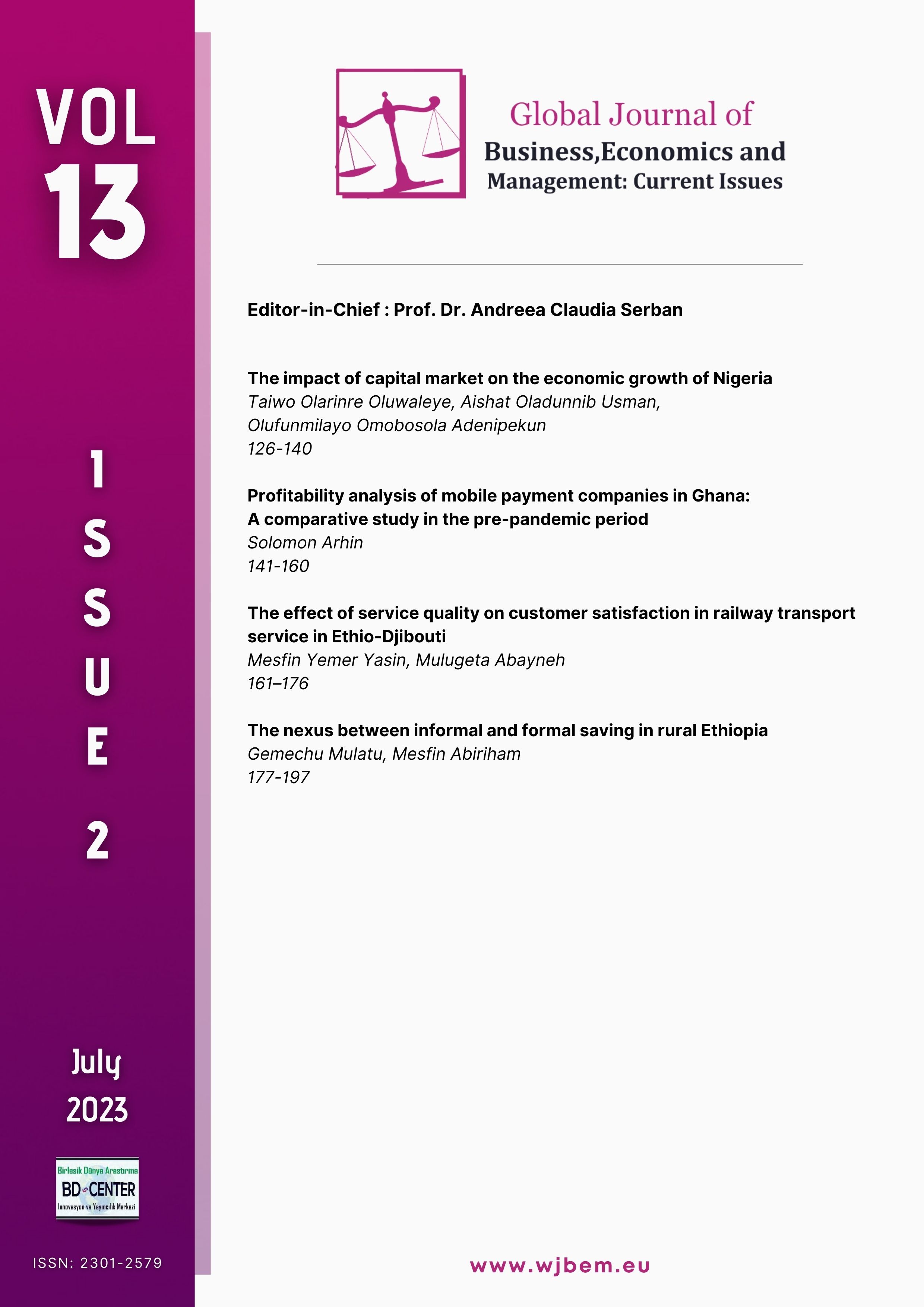The nexus between informal and formal saving in rural Ethiopia
Main Article Content
Abstract
Ethiopia is currently implementing its growth and transformation plan II to boost its economic growth over time to join the middle-income countries within a few years. It is believed that this objective can be realised if the country can make a substantial amount of savings. In cognizant of this, this study was undertaken to investigate the nexus between formal and informal savings and determinants of saving in the case of Sinana District. A multi-staged random sampling technique has been used to select 384 respondents from four Kebeles in the district. Both secondary and primary data sources were used to gather relevant information. A structured questionnaire was designed by the researchers to collect primary data. A seemingly unrelated regression (SUR) model was used to identify the common underlying factors associated with both the amount of formal and informal savings. SUR analysis result indicated that the amount of saving in formal financial institutions is statistically significantly affected by the age of the household head, family size, credit used, extension visit, landholding and road distance.
Keywords: Formal saving, informal saving, rural, saving, SUR model;
Downloads
Article Details

This work is licensed under a Creative Commons Attribution-NonCommercial-NoDerivatives 4.0 International License.
The Global Journal of Business Economics and Management: Current Issues is an open-access journal. The copyright holder is the author or authors. Licensee: Birlesik Dunya Yenilik Arastirma ve Yayincilik Merkezi, North Nicosia, Cyprus. All articles can be downloaded free of charge. Articles published in the Journal are Open-Access articles distributed under the CC-BY license [Attribution 4.0 International (CC BY 4.0)].

